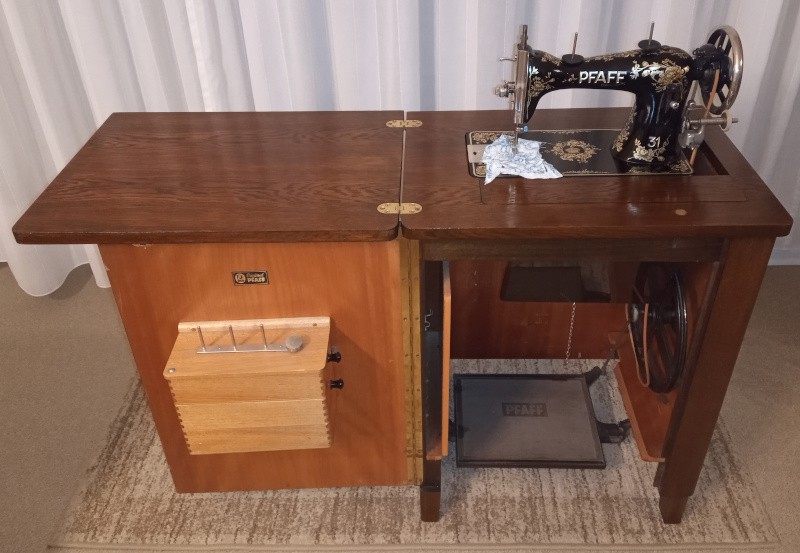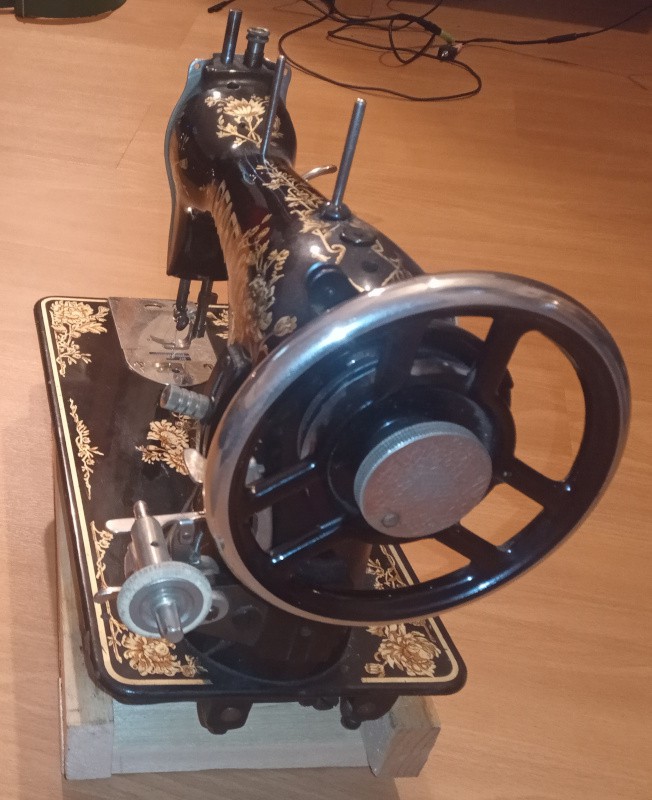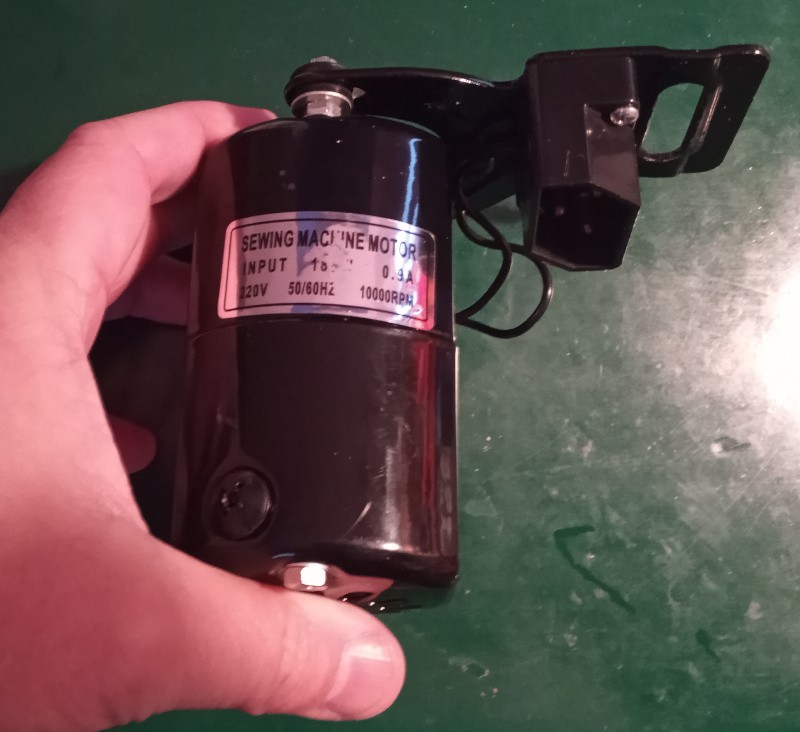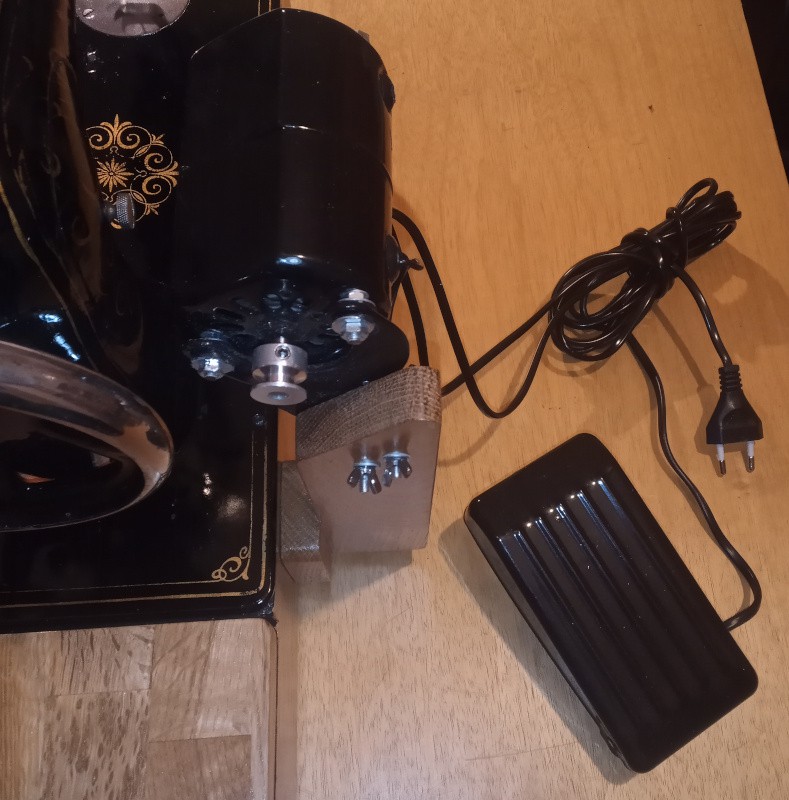Many of the older sewing machines were originally made to be "people powered."
While most folks don't know what to call it, most everyone has at some time seen a foot operated, treadle powered sewing machine:

That's my daughter's Pfaff 31 treadle operated sewing machine.
There were also machines made to be hand powered. They had a hand crank on the balance wheel. The operator had to crank the wheel with one hand while guiding the material with the other.
The hand cranks were attached to the machine using a boss.
This picture shows the boss on my daughter's Pfaff 31:

It's a bit hard to see, so I've marked it in red:

The boss on nearly all sewing machines is about the same size and in the same location. Because of this commonality, there are commercially available sewing machine motor sets. You can buy them on Amazon or from other online sources.
This is the motor from my Adler 8:

It was probably not a good choice, but it came with the machine when my kids bought it. It is rated for 10000 RPM maximum. Given how smoothly the Adler 8 runs, it can probably reach a large portion of that 10000 RPM - which translates to about 1600 stitches per minute given the 9mm to 54mm pulley ratio of the motor and the machine. An 8000 RPM (or lower) motor would be a better choice for the Adler. In general, too slow is probably a better choice than too fast.
The long slot on the right would normally be screwed to the boss on the sewing machine.
My Adler 8 doesn't have a boss. It was built before motors were a common idea, and it was built for speeds you couldn't reach with a hand crank. It was intended for use purely in its treadle table.
I don't have a table for my Adler 8, so I built a wooden base for it to sit on. The base has a wooden arm as a motor mount:

It is often possible to convert a treadle powered machine to electrical power by simply buying a sewing machine motor kit and screwing it to the existing boss on the machine. The opening in the table won't have been designed with the motor in mind so you may no longer be able to fold the machine down into the table with a motor attached.
If you've got the table, though, I do suggest you try sewing with the treadle before going electric. It takes a little practice, but it isn't that difficult to do:
That's me trying out the treadle on the Pfaff 31. Up to that point I had never operated a treadle machine. I didn't quite manage a steady rhythm, but then I was operating a camera while guiding the material and working the treadle.
The treadle belts are almost always dried and cracked on old
machines. They are simple leather belts, though, and are still
available. You can buy them online for just a few dollars.
 Joseph Eoff
Joseph Eoff
Discussions
Become a Hackaday.io Member
Create an account to leave a comment. Already have an account? Log In.